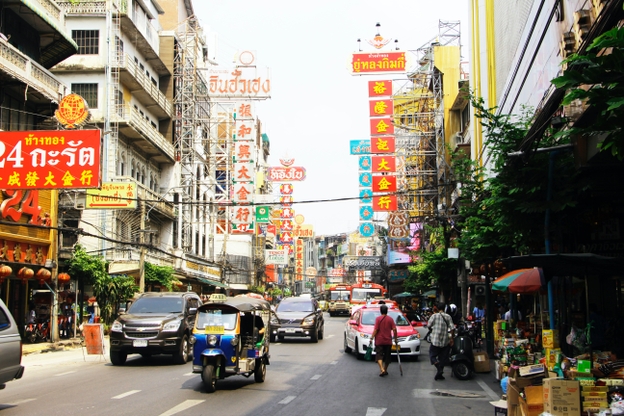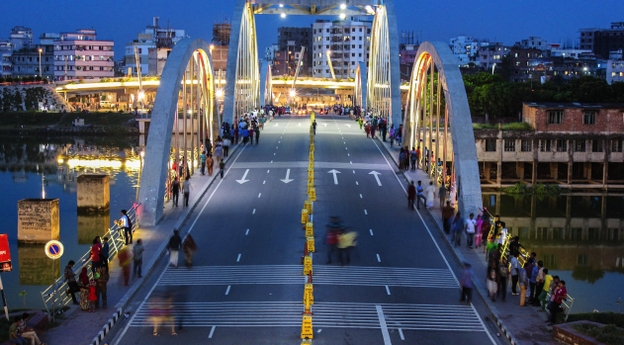April 9, 2024
Disinformation Risk Assessment: The Online News Market in Senegal
All 20 sites carried a medium to maximum risk of disinforming readers.
Note: this post references a methodology specific to Media Market Reviews published by GDI.
GDI is proud to present a new report assessing the disinformation risks in the Senegalese media market. This report is the result of research led by GDI, in collaboration with the Paradigm Initiative, conducted from July to December of 2023.
As the media world continues its seismic shift from traditional to digital formats, news organisations are grappling with an increased risk of circulating disinformation - intentionally or not. Though disinformation has always been a problem for media outlets, the internet has enabled disinformation to spread further and faster than ever before, making it critical for news outlets, readers and advertisers alike to understand their risk. GDI’s risk rating methodology provides key insights for all stakeholders to mitigate their disinformation risk and feel confident in what they are producing, reading or funding.
The following report presents our findings regarding disinformation risk in Senegal’s media market, based on a study of 20 news domains. The sample was defined based on the sites’ reach (using each site’s Alexa rankings, Facebook followers, and Twitter followers), relevance and the ability to gather complete data for the site.
Overview
Senegal’s media market has experienced exponential growth in the past several years. This growth is largely due to an increasing internet penetration rate and skyrocketing numbers of mobile connections, primarily among young people. As digital demand grows, Senegal’s media market value is expected to increase from an estimated 72.4 million USD in 2023 to 114 million USD by 2027.
Though the media market has traditionally been dominated by public service media, private initiatives, digitalisation and social media are fundamentally changing the country’s information ecosystem. Traditional public media, especially radio, remains a key method for Senegalese citizens to get information, but the rapid growth in the digital market has opened the path for media pluralism. However, despite boasting one of the highest rates of online users per capita in Africa, economic pressures continue to hamper the establishment of a widely diverse digital media environment.
Most Senegalese media outlets depend on government subsidies and advertising revenue for funding. Despite optimistic projections for advertising revenue growth concurrent with the rise of the digital market, government subsidies can be a strong inhibitor. Traditionally, these subsidies have been reserved for public media, though the government has started to give a limited number to private media.
Senegal has long been lauded as a democratic stronghold in West Africa, but recent political upheaval has tested this analysis. Before this year’s elections, the Senegalese government took significant steps to curb press freedoms and alter electoral laws, prompting the country to be rated as only “partly free” by Freedom House in both 2023 and 2024. In March 2024, Senegal conducted delayed elections and elected a new leader from the opposition. It remains to be seen what impact this will have on press freedoms and the media market as a whole.
Findings
The findings for Senegal’s news domains analysed in this sample show that 19 out of 20 sites were classified as high to maximum disinformation risk, 1 site was classified as medium risk and no sites were classified as low risk. Scores fall between 0 and 100, with 0 indicating maximum risk and 100 indicating no risk.
Senegalese domains in our sample performed far better on our Content pillar, with an average score of 78, than our Operations pillar, with an average score of 22. These results indicate that the studied sites generally published reliable content on their sites, but frequently lacked transparency and editorial checks and balances in the newsroom. Particular areas of concern across the sites include lack of attribution and sourcing, the absence of policies on accuracy and bylines as well as little information about funding sources and structures.
Conclusion
The overall disinformation risk in the Senegalese media market is moderate to high, and the risk is largely evenly distributed among high-traffic sites. However, since the vast majority of risk comes from operational shortcomings rather than disinforming content, media outlets can take immediate steps to lower their risk and improve their ratings.
Addressing these operational gaps is critical to lowering Senegal’s overall disinformation risk. Low scores in the Operations pillar offset good performance in the Content pillar and can open reputable, well-intentioned media organisations to significant disinformation risk. Many of these issues can be easily fixed by undertaking the following action items:
- Set clear editorial standards and guidelines, especially in regards to editorial independence.
- Establish and publish policies for pre-publication fact-checking and post-publication error corrections.
- Make a clear policy on bylines, and details the circumstances under which a byline may not be used.
- Clearly source and correctly attribute news sources.
- Publish more transparency on ownership and funding structures.
Read the full report for GDI’s full analysis and learn more about what Senegal’s newsrooms can do to minimise the risk of exposing their readers to disinformation.
Related Content

Disinformation Risk Assessment: The Online News Market in Thailand
In collaboration with the Institute of Asian Studies at Chulalongkorn University (IAS), GDI has released a new report assessing the disinformation risks in Thailand’s media market based on a study of 33 news domains.

Disinformation Risk Assessment: The Online News Market in Türkiye
GDI has released a new report assessing the disinformation risks in the Turkish media market.

Disinformation Risk Assessment: The Online News Market in Bangladesh
GDI, In collaboration with Digitally Right Limited, has released a new report analysing the disinformation risks in Bangladesh’s media market based on a study of 33 news domains.